System of Linear Equations
- A system can be either
singularornon-singular - If the system is redundant or contradictory then it is singular
- IF the system carries as many pieces of information as sentences then it is a
completesystem, which is callednon-singular - We can measure how redundant a system is using
Rank 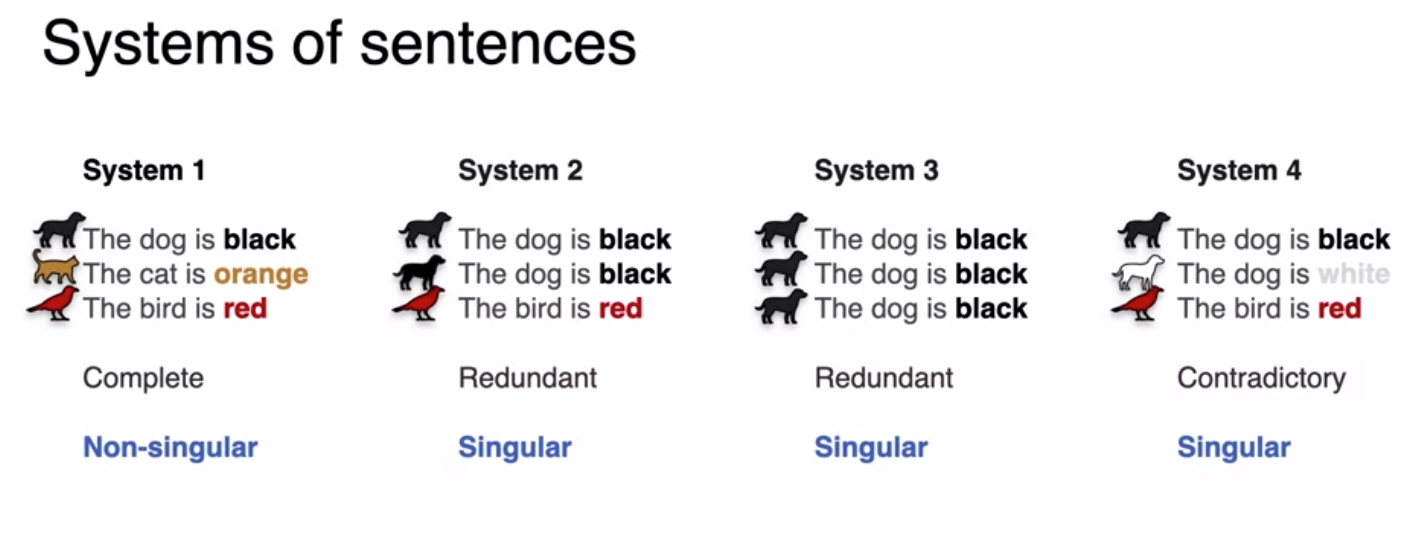
Singular and non-singular equations
If the system does not carry enough information then it can have infinite solutions

System without enough information 
System with contradictory information 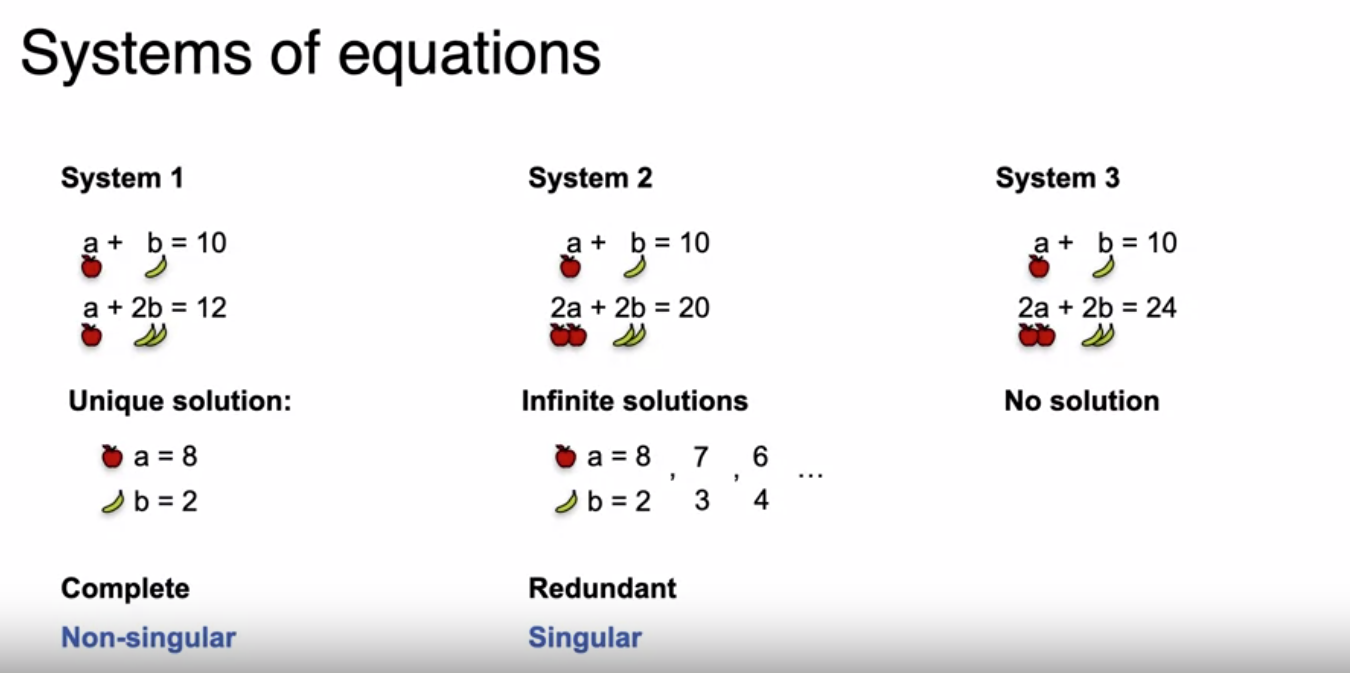
Singular and non-singular systems 
System of Equations as lines The constants does not matter when it comes to determine if the system is singular or non-singular. We can consider the constants as zero to make the equations simpler

Lines with Zero constants which goes through the origin
Linear dependence and independence
- If a row can be obtained from another row, then the second row is
dependenton the first one. They arelinearly dependent. Otherwise it isindependent. The same applies for columns in a matrix 
Determinant
If the determinant is zero then the matrix is singular. Otherwise the matrix is non-singular
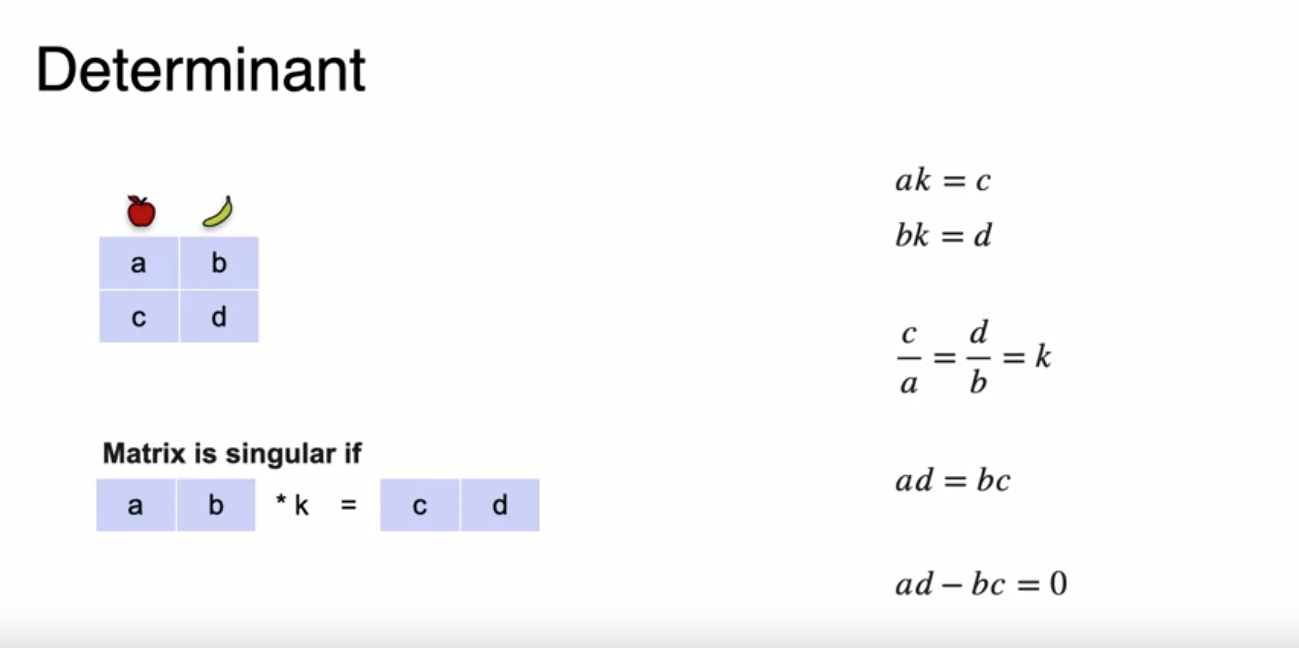
Caculating Determinant For matrices bigger than 2x2, calculating the determinant is more involved. We need to wrap around and consider all the diagonals. See the picture below for 3x3 matrix
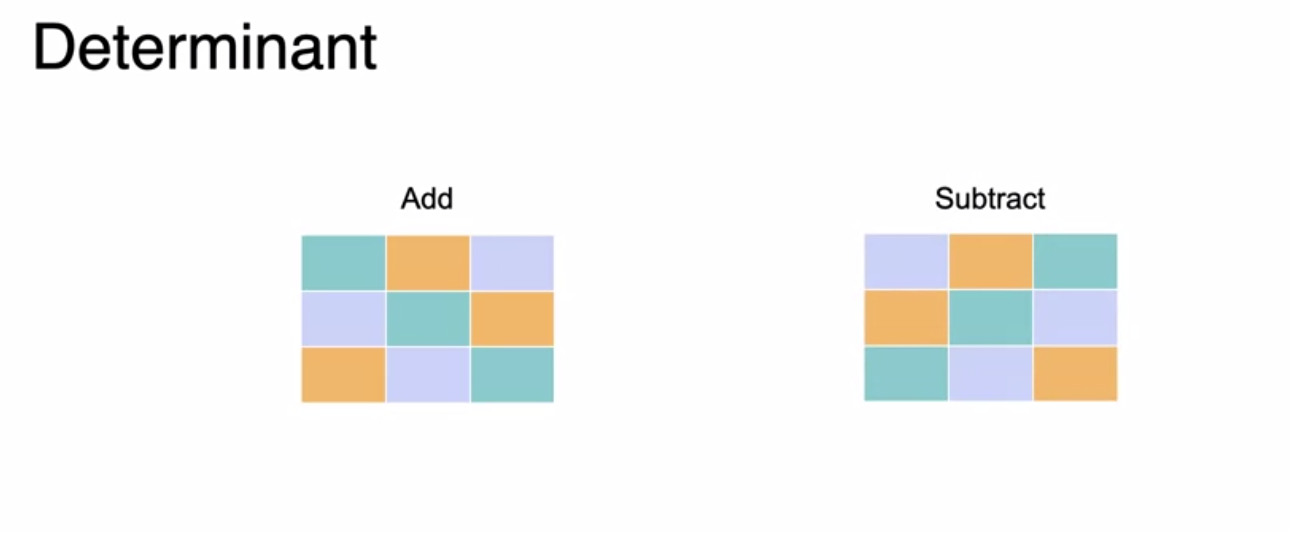
Caclulating the determinant for 3x3 matrix 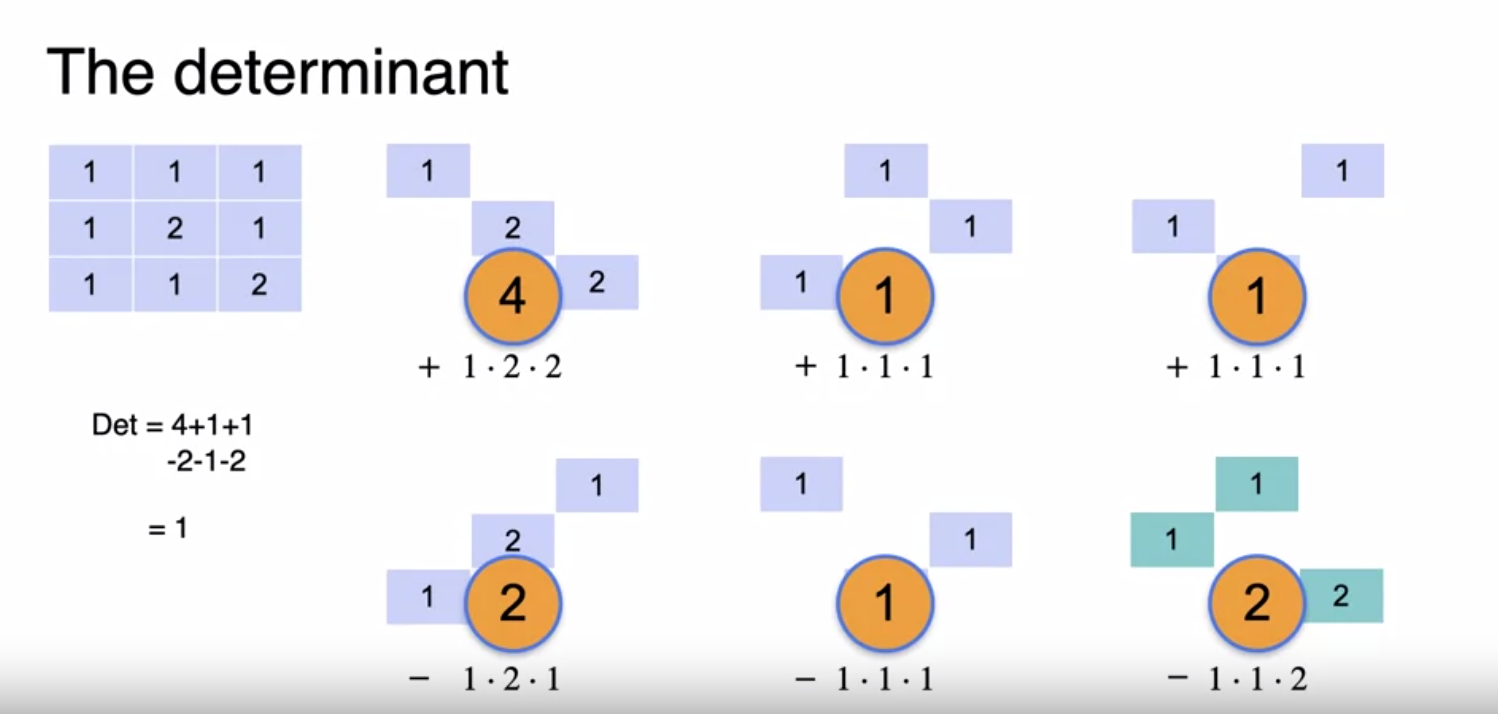
Steps in calculating the determinant Upper Traingular Matrix is a matrix in which all the values below the diagonal is zero. For such a matrix, the determinant is the product of main diagonal because all other multiplication operations will have zero in it. (see the figure below)

Determinant for upper traingle matrix
Reference
- Coursera’s
Linear Algebra for Machine Learningcourse - System of Linear Equations